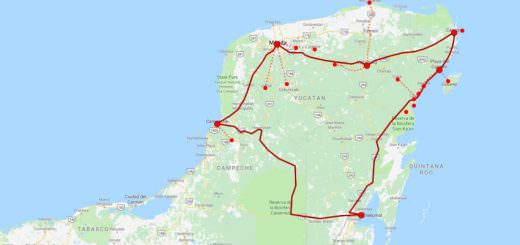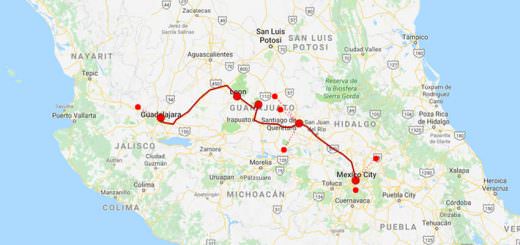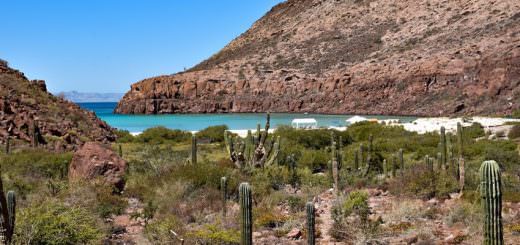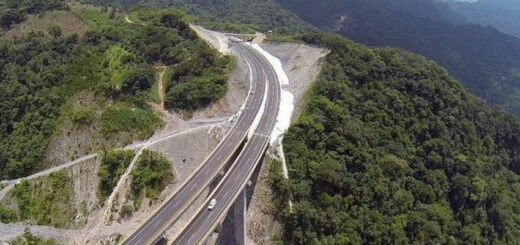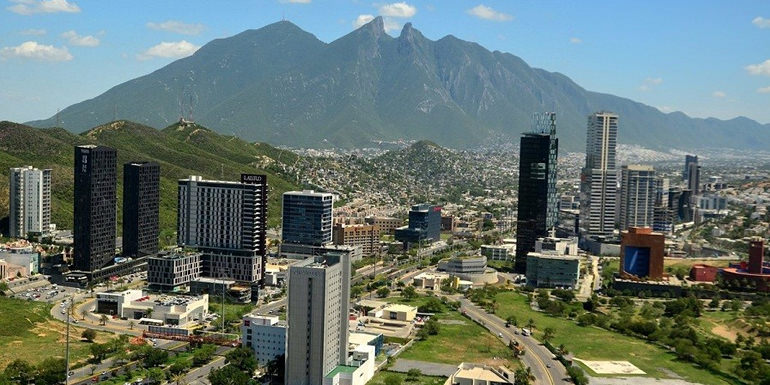
Monterrey
Monterrey is the capital and largest city of the northeastern state of Nuevo León, in Mexico. Monterrey is located in northeast Mexico, at the foothills of the Sierra Madre Oriental.
The Monterrey metropolitan area is the third most populous city in Mexico with more than 4 million.
The Monterrey metropolitan is composed of the adjoined municipalities of Monterrey, Apodaca, Escobedo, García, Guadalupe, Santiago, Juárez, San Nicolás de los Garza, San Pedro Garza García, and Santa Catarina.
Monterrey is one of the wealthiest cities in Mexico, it is considered a Beta World City, cosmopolitan and competitive. Rich in history and culture, Monterrey is considered one of the most developed cities in the entire country and often regarded as the most “Americanized” in Mexico.
The uninterrupted settlement of Monterrey started in 1596, with its founding by Diego de Montemayor. In the years after the Mexican War of Independence, Monterrey became an important business center.
With the establishment of Fundidora Monterrey, the city experienced great industrial growth.
Geo & Climate
The city of Monterrey is 540 meters above sea level and located in the northeastern Mexican state of Nuevo León.
The Santa Catarina River – dry most of the year on the surface but with flowing underground water – bisects Monterrey from East to West, thus separating the city into north and south halves, and drains the city to the San Juan River and the Rio Grande.
Monterrey is adjoined to San Nicolás de los Garza, García, and General Escobedo to the north; Guadalupe, Juárez, and Cadereyta Jiménez to the east; Santiago to the south; and San Pedro Garza García and Santa Catarina to the west.
Together, their population reaches over 4,080,329 people.
Monterrey lies north of the foothills of the Sierra Madre Oriental mountain range.
A small hill, the Cerro del Topo and the smaller Topo Chico are located in the suburbs of San Nicolás de los Garza and Escobedo. West of the city rises the Cerro de las Mitras (Mountain of the Mitres), which resembles the profile of several bishops with their miters.
Cerro de la Silla (Saddle Mountain) dominates the view at the east of the city and is considered a major symbol of the city. Cerro de la Loma Larga – South of the Santa Catarina River – separates Monterrey from the suburb of San Pedro Garza García.
At the summit of the Cerro del Obispado, north of the river, is the historic Bishopric Palace, the site of one of the most important battles of the Mexican-American War.
Climate
Monterrey has a semi-arid climate (Köppen climate classification BSh). It is one of the warmest major cities in Mexico.
Summers are generally hot, spring and fall temperate, and winters mild, with temperatures rarely below freezing. The average high in August is 35 °C and the average low is 23 °C. The average January high is 21 °C and the average low in January is 8 °C.
Rainfall is scarce in winter, but more frequent during May through September.
Monterrey frequently experiences extreme weather changes, for example, sometimes reaches 30 °C in January and February, despite these being the coldest months.
The most extreme weather changes in summer occur with rainfall, which changes extreme heat to cooler temperatures, and the temporary absence of the northern winds in winter, which can lead to abnormally high temperatures.
Seasons are not well defined; the warm season may start in February and may last until September.
In April and May 2011 temperatures reached 45 °C or more, causing fires and extreme heat in the city, despite the fact that these months are in spring. Snow is a very rare event, although an accumulation of 51 cm in 8 hours occurred in January 1967.
The most recent snowfall was in December 2004, on Christmas Eve. Several sleet and ice events occurred during January 2007, December 2009, January and February 2010, and February 2011, caused by temperatures around -5 °C.
From June 30 to July 2, 2010, Monterrey was hit by the worst natural disaster in the city’s history when Hurricane Alex delivered more than 584 mm of rain around 72 hours, with areas reaching up to 1 m of rain during that same period.
The amount of water that fell is equivalent to the average precipitation for a year period. This was about 3–4 times as much rain as when Hurricane Gilbert arrived in the city on September 15, 1988.
This hurricane destroyed homes, avenues, highways, and infrastructure, and left up to 200,000 families without water for a week or more. The death toll of Hurricane Alex was estimated to be around 20.
Origin of the Name & Heraldry
Monterrey Coat of Arms is represented by an Indian throwing an arrow to the sun in front of Cerro de la Silla mountain. This scene represents the natives’ ceremony, they form a row in front of Cerro de la Silla and wait for the sunrise to throw one arrow, each one to the sun.
History & Timeline
Prehispanic history
Prior to the European foundation of the city, there was no established nation-state, and the population instead consisted of some indigenous semi-nomad groups.
Carved stone and cave paintings in surrounding mountains and caves have allowed historians to identify four major groups in present-day Monterrey: Azalapas, Huachichiles, Coahuiltecos, and Borrados.
Foundation
In the 16th century, the valley in which Monterrey is located was known as the Extremadura Valley, an area largely unexplored by the Spanish colonizers.
The first expeditions and colonization attempts were led by conquistador Alberto del Canto, naming the city Santa Lucia, but were unsuccessful because the population was attacked by the natives and fled.
The Spanish expeditionary of Sephardic Jewish descent, Luis Carvajal y de la Cueva negotiated with King Philip II of Spain to establish a territory in northern New Spain, which would be called Nuevo León, the “New Kingdom of León”.
In 1580 he arrived in the newly granted lands but it was not until 1582 that he established a settlement called San Luis Rey de Francia (named for Saint Louis IX of France) within present-day Monterrey.
The New Kingdom of León extended westwards from the port of Tampico to the limits of Nueva Vizcaya (“New Biscay”, now the State of Chihuahua), and around 1,000 kilometers northwards.
For eight years Nuevo León was abandoned and uninhabited, until a third expedition of thirteen families led by conquistador Diego de Montemayor founded Ciudad Metropolitana de Nuestra Señora de Monterrey (“Metropolitan City of Our Lady of Monterrey”) on September 20, 1596, next to a water spring called Ojos de Agua de Santa Lucia, where the Museum of Mexican History and Santa Lucía riverwalk is now located.
During the years of Spanish rule, Monterrey remained a small city, and its population varied from a few hundred to only dozens. The city was a place that facilitated trade between San Antonio (now in Texas), Tampico, and Saltillo to the center of the country.
Tampico’s port brought many products from Europe, while Saltillo concentrated the Northern Territories trade with the capital, Mexico City. San Antonio was the key trade point with the northern foreign colonies (British and French).
After Mexican Independence (19th century)
In the 19th century, after the Mexican Independence War, Monterrey rose as a key economic center for the newly formed nation, especially due to its balanced ties between Europe (with its connections to Tampico), the United States (with its connections to San Antonio), and the capital (through Saltillo).
In 1824, the “New Kingdom of León” became the State of Nuevo León, and Monterrey was selected as its capital.
However, the political instability that followed the first 50 years of the new country allowed two American invasions and an internal secession war, during which the Governor of the State annexed the Coahuila and Tamaulipas states, designating Monterrey as the capital of the Republic of the Sierra Madre as it did before in 1840 for the Republic of the Rio Grande.
In 1846, the earliest large-scale engagement of the Mexican-American War took place in the city, known as the Battle of Monterrey. Mexican forces were forced to surrender but only after successfully repelling U.S. forces during the first few advances on the city.
The battle inflicted high casualties on both sides, much of them resulting from hand-to-hand combat within the walls of the city center.
Many of the generals in the Mexican War against France were natives of the city, including Mariano Escobedo, Juan Zuazua, and Jerónimo Treviño.
Contemporary history
During the last decade of the 19th century, the city of Monterrey was linked by railroad, which benefitted industry.
It was during this period that José Eleuterio González founded the University Hospital which is now one of the best public hospitals in the northeast of Mexico and serves as medical school support to the School of Medicine of the Autonomous University of Nuevo León (UANL).
Antonio Basagoiti and other citizens founded the Fundidora de Fierro y Acero de Monterrey.
In 1890 the brewery company Cervecería Cuauthemoc one of the milestone local enterprises was founded and in 1900, a steel-producing company that accelerated the already fast industrialization of the city and became one of the world’s biggest of its time.
Tourist Attractions & Sightseeing
Santa Lucía Riverwalk, an artificial river built between 1996 and 2007. It currently joins the Macroplaza with Fundidora Park.
The Macroplaza, one of the world’s largest squares, is the cultural and administrative heart of the city featuring remarkable monuments, green areas, and buildings.
Faro del Comercio (Lighthouse of Commerce), is another trademark of the city. This monument beams a green laser around the city at night.
Barrio Antiguo (lit. Old neighborhood or old town) is the historical urban center of the city of Monterrey. There are preserved old houses from the XVII, XVIII, and XIX centuries. Nowadays bars, cafes, art galleries, and restaurants can be found there.
In November of every year the Festival Cultural Barrio Antiguo took place with national and international artists and performers but now is replaced with the Festival Internacional de Santa Lucia, which now takes place in September.
The Museum of Modern Art is a post-modern Mexican architecture designed by Ricardo Legorreta with the objective of creating different ambiances for artists and visitors from all around the world.
Monterrey’s Inukshuk is one of only a handful of authentic examples to be found outside Canada of these stone monuments from the high Arctic. The sculpture was created in situ by the renowned Inuit artist Bill Nasogaluak in 2007 and was a gift to the state of Nuevo León from the Canadian Chamber of Commerce and the Government of Canada.
Fundidora Park is a large urban park that contains old foundry buildings, 120 hectares of natural ambiance, artificial lakes, playgrounds, an alternative cinema (Cineteca), a museum (Photo Collection, the State Plastic Arts Collection, Exhibits and Spaces), a hotel, an auditorium and convention center.
Puente de la Unidad (sometimes called Puente Atirantado) is a suspension bridge that crosses the Río Santa Catarina and joins San Pedro Garza García with Monterrey.
The Alfa Planetarium is the first IMAX dome built in Latin America and the fourth in the world.
The Government Palace of Nuevo León is a pink marble of Neoclassical architecture where the governor’s office is located.
El Cerro del Obispado (Bishopric Hill) includes a public, scenic lookout called Mirador del Obispado, a Monumental flag, and the museum inside the Palacio del Obispado (the Bishopric Palace).
ITESM, ITESM has two distinctive buildings CEDES which houses the administration of the ITESM nationwide system, and CETEC which houses the main computer classroom and other offices.
Cuauhtémoc Moctezuma Brewery (Cervecería Cuauhtémoc Moctezuma), with its 19th-century buildings and where the national Baseball Hall of Fame (Salón de la Fama) is located.
Cultural Centers, Museums, Theaters & Cinema
The Museum of Mexican History is the most representative and visited museum of the North of the Republic, fulfilling its purpose of spreading the historical context of the Mexican cultural heritage.
Nearby Tourist Attractions
The Cola de Caballo (Horse Tail) waterfall, on the mountains near the towns of Santiago and El Cercado, about 35 km (22 mi) south.
On the way to the Cola de Caballo waterfall (Carretera Nacional going to Ciudad Victoria, Tamaulipas), in Santiago, the Presa Rodrigo Gomez or “La Boca” (“La Boca” Dam) lays nested between green hills.
The mountains surrounding Monterrey contain many canyons, trails, and roads that cross deserts and forests. Suitable trails are available to the general public. The Sierra Madre Oriental mountains south of the city are included in the “Parque Nacional Cumbres de Monterrey” (National Park), which was added to UNESCO’s Man and the Biosphere (MAB) Program of Biosphere Reserves in 2006.
Cumbres de Monterrey includes:
Parque Ecológico Chipinque, which contains forested areas (oak and oak-pine mainly).
La Estanzuela State Park, about 7 km (4 mi) south of Monterrey, is a river and forested area.
La Huasteca, west of the city, in the municipality of Santa Catarina.
El Potrero Chico Climbing Area, northeast of the city, in the municipality of Hidalgo.
Garcia Caves – These caves are situated in Garcia, Nuevo Leon, and were discovered in 1843. Inside you can see amazing stalagmites formations and snail fossils.
Matacanes – can be found in the municipality of Potrero Redondo in Santiago, Nuevo Leon. It is a 10-hour walking tour in which you can find rappel descents, underground rivers, and waterfalls, among other obstacles.
Hydrophobia Canyon – similar to Matacanes with the only difference being that this is a 100% aquatic area.
Cascade Cola de Caballo – a spectacular waterfall in Santiago Nuevo Leon, formed by water that runs down from the mountains of nearby Parque Nacional Cumbres de Monterrey, impressive rock formations, and sprawling forests.
The Cerro de la Silla (Saddle Mountain).
Gastronomy & Cuisine
The most traditional dish from Monterrey is cabrito, a kid goat cooked on embers based on the Jewish cuisine of the founders of the city.
Other local dishes and customs that perhaps date back to the Crypto-Judaism of these founders are the “semita” (bread without leavening), the capirotada dessert (a mix of cooked bread, cheese, raisins, peanuts, and crystallized sugarcane juice), and the relative absence of pork dishes.
Another famous local dish is machacado con huevo.
Carne asada on weekends remains a tradition among Monterrey families. It is usually served with grilled onions, baked potatoes, and sausages or chopped as tacos.
Locally brewed beer and cola are an almost mandatory part of the weekly ritual.
The traditional desserts, “glorias” and “obleas,” made from goat milk are both traditional candies from Nuevo León.
Traditions, Holidays & Festivals
Starting in the 1960s, Monterrey has been known for “Norteño” music which is the trademark music of the city, bands like Ramon Ayala, Pesado, Duelo, and other Mexican “Regional” music bands perform at the different clubs in the city.
Monterrey has witnessed the birth of several bands that have become internationally acclaimed.
Their genres vary considerably. Bands include Plastilina Mosh, Control Machete, Kinky, El Gran Silencio, Jumbo, Division Minuscula, Genitallica, 3Ball MTY, GAMA, and Los Claxons.
The song “Los Oxidados” by Plastilina Mosh opened the 2005 movie Mr. & Mrs. Smith.
How to get there & Transportation
Monterrey is connected with the United States–Mexico border, the sea, and inland Mexico through different roads, including the Carretera Nacional (also known as the Panamerican Highway) that runs from Nuevo Laredo to Mexico City and south, and the Carretera Interoceánica connecting Matamoros with the port of Mazatlán on the Pacific; it is also crossed by highways 40, 45, 57.
The divided highway Monterrey-Saltillo-Matehuala-Mexico City is the main land corridor to interior Mexico.
There are several between-cities bus lines at the bus station downtown. There are arrivals and departures into deeper Mexico, to the U.S. border, and into the United States.
Monterrey is also connected by at least three important railroad freight lines: Nuevo Laredo-Mexico City, Monterrey-Tampico, and Monterrey-Pacific (Mazatlán).
The city has a rapid transit system called Metrorrey, which currently has 2 lines. and a BRT called Ecovia.
The city is served by two international airports: General Mariano Escobedo International Airport (served by major international carriers and moving more than 6.5 million passengers in 2007) and Del Norte International Airport, a primarily private airport.
Monterrey is linked through frequent non-stop flights to many Mexican cities and to key United States hubs (Atlanta, Chicago-O’Hare, Dallas/Fort Worth, Detroit, Houston-Intercontinental, JFK/New York, and Las Vegas). Monterrey is the second most important city for the operating routes of Aeroméxico.
Five airlines have their operational bases and headquarters in Monterrey, Volaris, Aeroméxico Connect, VivaAerobus, and Magnicharters. There is no public transportation from Monterrey International Airport to the city.
However, a cartel of taxi services links the airport with the city and charges around $20 US for a one-way ride to the city. From this airport, there is a bus shuttle to nearby Saltillo. Inter-city bus services run daily into the interior, as well as north to the US border and points beyond.
Tourist Assistance + Emergency Numbers
You can dial 078 from any phone, where you can find free information about tourist attractions, airports, travel agencies, car rental companies, embassies and consulates, fairs and exhibitions, hotels, hospitals, financial services, migratory and other issues.
Or dial the toll-free (in Mexico) number 01-800-006-8839.
You can also request information to the email correspondencia@sectur.gob.mx
MORE EMERGENCY NUMBERS:
General Information: 040 (not free)
National Emergency Service: 911
Radio Patrols: 066
Police (Emergency): 060
Civil Protection: +52(55)5683-2222
Anonymous Complaint: 089
Setravi (Transport Mobility): +52(55)5209-9913
Road Emergency: 074
Cruz Roja: 065 o +52(55)5557-5757
Firefighters: 068 o +52(55)5768-3700
Let us know if this article was useful for you


















